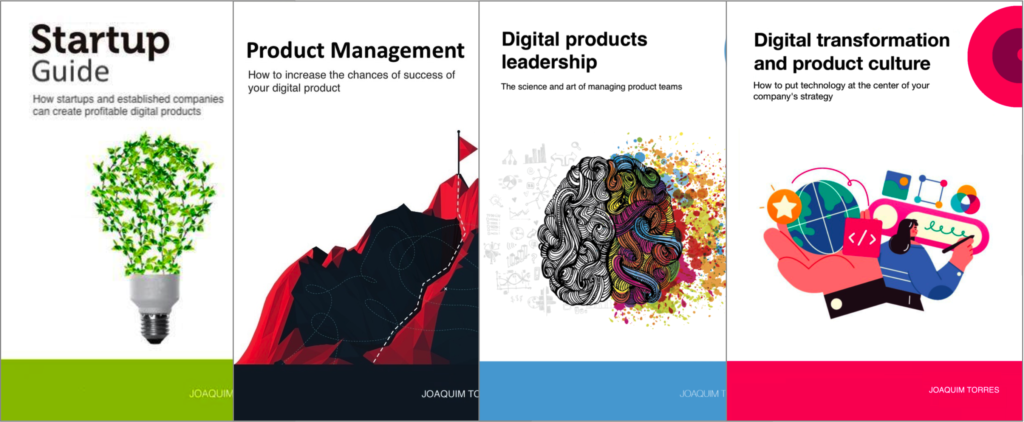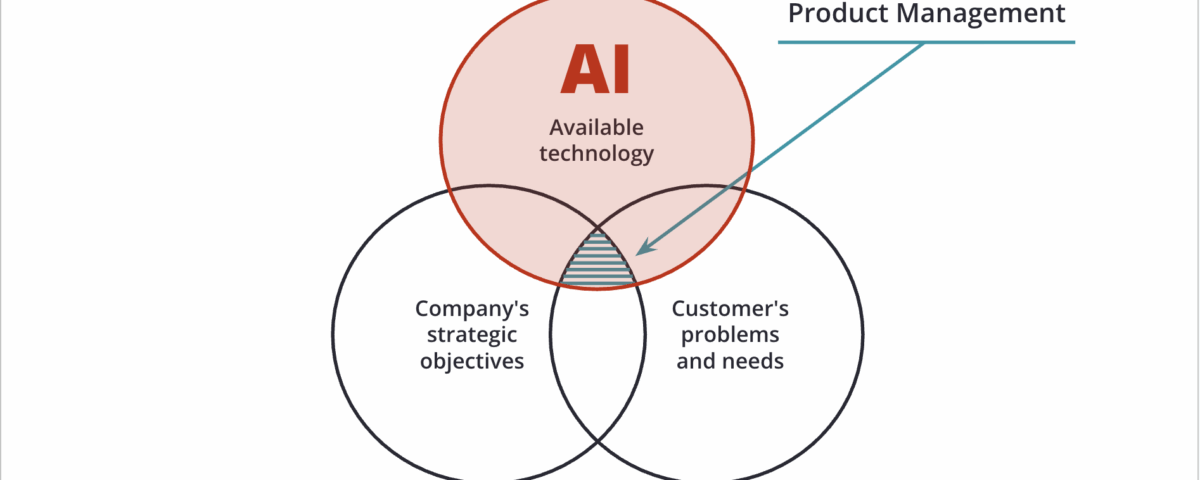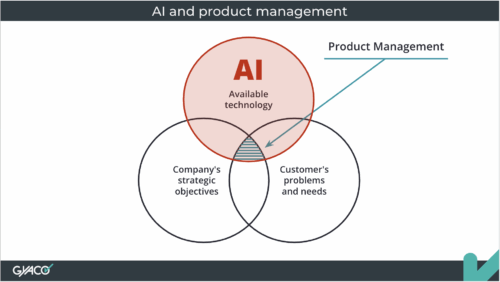Beyond Archetypes: The Dimensions of Product Leadership
28 de August, 2025Not every feature needs AI
30 de September, 2025In January 2024, I wrote about “Artificial Intelligence and Product Management“, where I highlighted a few key points:
- AI is not new: although it gained popularity in 2023 with ChatGPT, artificial intelligence has been used for decades and should have already been present in digital products long before that.
- Historical pattern: just like the internet, online video, and smartphones, AI follows the cycle of older technologies that only become mainstream after the launch of an accessible and useful product.
- Different applications: product managers need to evaluate AI’s impact on development, user interface, and the new, and often unpredictable, possibilities it opens.
- Practical cases: examples from companies like Locaweb, Conta Azul, Gympass, and Lopes show how data science and AI were applied in churn prediction, automatic expense categorization, personalized recommendations, and process automation.
Since then, I’ve seen many articles, talks, and podcasts showing how AI can improve productivity across different areas of a company — including product management and development. Just two weeks ago, I attended a tech event where AI was the main theme. The majority of the talks and case studies focused on how to use AI to do something (writing, coding, debugging, drafting specifications, creating prototypes, etc.) faster and more efficiently.
On the other hand, there are far fewer articles, talks, or podcasts exploring how AI can be used as a technology to actually help us solve customer problems while generating results for the business. I’ve already written a “Practical Guide to AI for Product Managers”, which outlines the types of problems AI can help us solve. However, in conversations with clients and people in the product community, I realized I need to discuss this topic more.
AI is not just about productivity: it’s about creating better products
By better products, I mean products that solve the customer’s problem more effectively while also delivering better results for the company. AI is another technology we need to understand and add to our “toolbelt” to help us build better products.
And this is not just about tech companies. Banks use digital products to connect with their customers. Real estate companies use digital products to showcase their listings. Hospitals, schools, industries, and other non-tech companies all have digital products at the core of how they interact with customers and improve their internal operations.
If applying technology to the core products of non-tech companies was already essential, applying AI is the natural next step.
To illustrate the focus on delivering better products, I like to share the case of the similar properties recommendation feature at Lopes, the leading real estate company in Brazil.
At Lopes, we faced a recurring challenge: improving the experience of customers searching for real estate. One key feature was the recommendation of similar properties. However, the initial version of the algorithm used only three static variables (location, type, and price), which limited its accuracy.
To solve this, the Growth squad (in the Customer tribe) joined forces with the Data Science squad (in the Big Data tribe). Together, the teams developed a new similarity algorithm, expanding the analysis from three to ten static variables and applying machine learning techniques — learning from which properties were most clicked and using that information to improve future recommendations.
The improvements were significant:
-
Coverage of properties with “similar recommendations” jumped from 72% to 99.5%.
-
The average number of similar properties displayed grew by 83%.
This had a direct impact on both customer experience and business results:
-
106% increase in clicks.
-
20% increase in leads generated.
This case shows how the application of AI, even in a seemingly simple feature, can have a direct impact on customer experience and company results.
In the following article, we’ll talk about the difference between deterministic and probabilistic solutions. Spoiler: AI only generates probabilistic solutions — but not every problem actually requires a probabilistic approach.
Workshops, coaching, and advisory services
I’ve been helping companies and their leaders (CPOs, heads of product, CTOs, CEOs, tech founders, and heads of digital transformation) bridge the gap between business and technology through workshops, coaching, and advisory services on product management and digital transformation.
Digital Product Management Books
Do you work with digital products? Do you want to know more about managing a digital product to increase its chances of success, solve its user’s problems, and achieve the company objectives? Check out my Digital Product Management books, where I share what I learned during my 30+ years of experience in creating and managing digital products:
- Digital transformation and product culture: How to put technology at the center of your company’s strategy
- Leading Product Development: The art and science of managing product teams
- Product Management: How to increase the chances of success of your digital product
- Startup Guide: How startups and established companies can create profitable digital products



